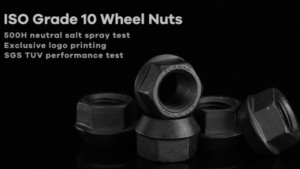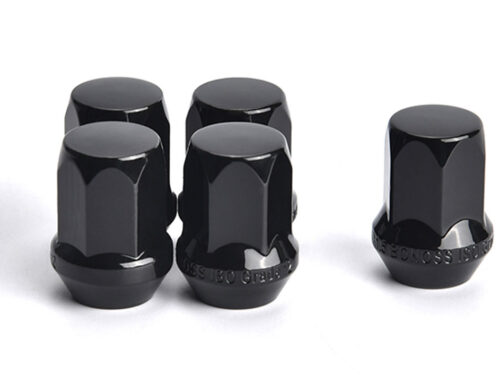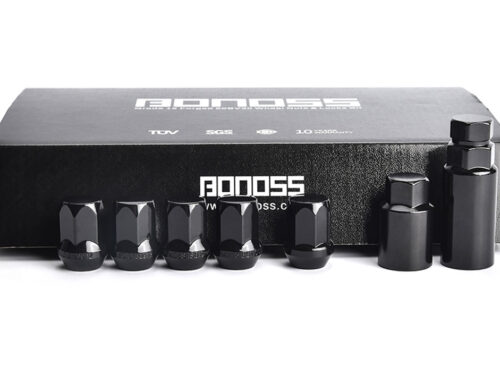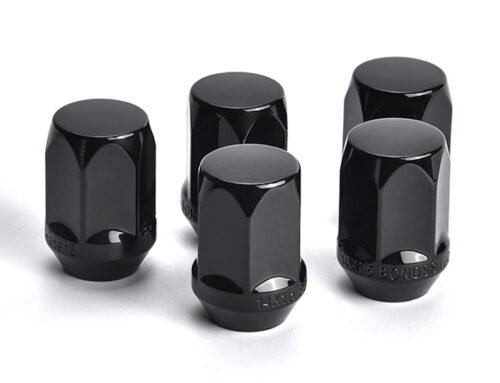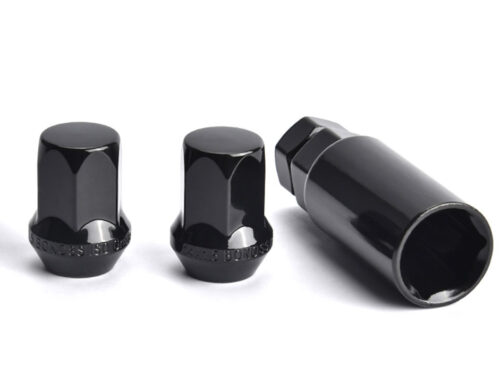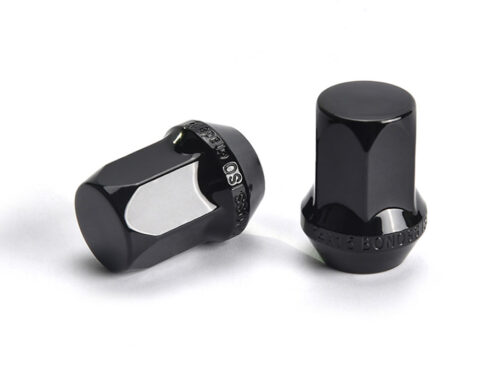Lug nuts are a standard fastener for Japanese and American brand cars. The wheel studs on the hub assembly thread through the wheels and engage the lug nuts, creating a clamping force that locks the wheel. The lug nuts are fasteners with locked round or tapered seats to keep the wheels in a fixed centered position. Professional manufacturers of aftermarket lug nuts will recommend that you use a fixed torque to install the lug nuts.
Replacing the tire becomes very difficult if you find seized lug nuts after a tire leak. BONOSS provides several ways to remove seized lug nuts so you can replace the tire. First, we need to understand what conditions may cause seized lug nuts. If you find that lug nuts can no longer be used, please replace them with aftermarket lug nuts in time.
What Will Cause Seized Lug Nuts?
According to customer feedback, they found that the stock lug nuts could not be removed when trying to replace some aftermarket lug nuts. The first reason is using a high-torque air impact wrench when installing the lug nuts, which is a common mistake. If you are replacing a tire on the street, they will likely use an air impact wrench to tighten your lug nuts. They believe the higher torque will tighten the lug nuts; even if the thread is damaged, the tightness will not be affected.
The air impact wrench does stuff the lug nuts into the wheels. If you are lucky, all this will not be a problem. But there is always schlimazel, who can’t remove the lug nuts even if they are bent with a torque wrench. The air impact wrench requires only a high torque to tighten the lug nuts; too much torque can easily cause damage to the lug nut threads, making the lug nuts challenging to remove.
The second reason is that the lug nuts are rusty. Lug nuts are usually made of chrome-plated steel, which has good corrosion resistance, or aluminum alloy lug nuts, which protect the inner metal from oxidation by a rust-proof coating. Lug nuts need to be installed with a sleeve during installation. It is possible to damage the rust-proof coating and cause partial exposure of the metal while the oxidation reaction will continue to react with the metal.
The volume of the oxidized metal tends to expand, causing the engagement between the threads to stick together. This is not beneficial to the wheel fixing because as the oxidation of the metal continues, the volume of the oxidized part will continue to increase, affecting the structural stability. Also, the internal properties of the metal change after oxidation, and the values of tensile strength, yield strength, and proof load decrease, and the shear force that can be withstood decreases, affecting the wheels’ fixation.
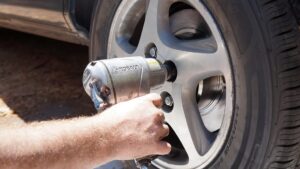
The third reason is that the lug nuts’ thread is wrong, and the lug nuts are inserted into the wheel studs using an air impact wrench. For example, 1/2” and M14x1.5 threads are very similar, but the wrong thread can cause them to interlock engagements, making the lug nuts seize and damaging the threads of the wheel studs. Replacing the wheel studs will cost you more in time and money.
The fourth reason is the use of Loctite for fastening. Many people do not wish for the lug nuts to fall off, so Loctite is used to fasten the lug nuts, and we do not recommend adding any liquid to the lug nuts threads. If you wish to use them, choose the correct color. Loctite comes in blue and red, blue for fasteners that can be easily removed and are suitable for motorized and non-motorized parts that require occasional maintenance, and red for fasteners that are permanently fastened. Industrial grade thread locker has a stronger punch than blue and only can be removed by heating the parts to 500F.
Imagine standing on the side of the road in a rainstorm with nothing to do with your Loctite-coated lug nuts but call and pay for a tow truck.
The fifth reason is the deformation of the head of the lug nuts. Standard lug nuts have pentagonal, hexagonal, or other shapes of heads, and they can be installed and removed using the corresponding sockets. If the lug nuts are below grade 8, the metal cannot withstand high torque, plastic deformation of the head may occur, and the sockets cannot lock the lug nuts after the deformation.

How to Remove Seized Lug Nuts?
The first method is to use your weight to turn the torque wrench. After using a socket to hold the lug nuts in place, move the torque wrench to 10 o’clock, and most of the lug nuts are loosened counterclockwise. Stepping on the wrench with one foot will allow you to remove the seized lug nuts. The reason is that a lot of initial force helps to overcome high static friction. It is not recommended to stand on the wrench with both feet or jump towards the wrench, which could get you injured. Consider using a cheater bar, a long hollow rod, or a Four-Way lug wrench.
Using these tools for a more extended force application rod, with the help of leverage, the stressed end will be subjected to a greater force and can easily remove the seized lug nuts.
The second method uses an air or electric impact wrench to remove rusty lug nuts. The powerful instantaneous torque is very effective in removing the stuck lug nuts, but the removed lug nuts often need to be replaced because the torque may damage the head or the threads of the lug nuts. Most air impact wrenches often use high torque for removal. Note that small electric wrenches may not be able to remove seized lug nuts, and you may need professional help.
The third method is to use a rust remover or penetrating oil, which works very quickly on seized lug nuts, as the liquid reacts with the rust to help the lug nuts gain room to loosen. Most of the rust is iron oxide, so it is possible to use Coke to achieve the above effect. However, we still recommend using professional WD40 rust remover, which can prevent rust and remove moisture, unscratched rust, clean, conduct electricity, and is cost-effective. Waiting ten minutes and then using a torque wrench to remove them will be easy.
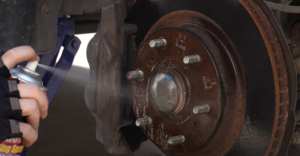
The fourth method is to heat the seized lug nuts. Badly corroded lug nuts can be burned using a gas welding oxide flame, followed by a drop of oil. By the principle of thermal expansion and contraction, the expansion and cooling of the metal increase the gap between the threads, thus removing the seized lug nuts. Similarly, replacing the lug nuts after removal is recommended, as they may not be as effective as if the lug nuts have undergone plastic deformation.
The fifth method is to destroy the head of the lug nuts. The last method may require destroying the head of the lug nuts and embedding a specific shaped tool into the lug nuts to remove them. Of course, a situation like this is relatively uncommon.
BONOSS offers aftermarket lug nuts for all models, with thread data covering M12 x 1.25, M12 x 1.50, M12 x 1.75, M14 x 1.25, M14 x 1.50, 1/2″ UNF, each thread data with recommended torque and mounting turns. BONOSS provides aftermarket Grade-10 lug nuts made of SCM440 and lightweight lug nuts made of 7075-T6 high-strength aluminum alloy, equipped with unique mounting sleeves.
Standard installation is the basis of driving safety. The minimum number of turns and the locking torque are essential parameters for installation. Since the BONOSS lug nut has the same grade or performance as the original nut, the BONOSS lug nut can withstand greater tightening torque. However, considering different wheel hubs and original thread, we recommend using the minimum number of turns and torque recommended by the original car for locking. Generally, the minimum number of turns and the locking torque for different threads are as follows:
- (Minimum number of turns for wheel bolts / Lug nuts):
M12 x 1.25 = 8.0 turns = 113N.m (83.3Ft-tb) = approx. 10 mm of load-bearing shaft length
M12 x 1.50 = 6.5 turns = 113N.m (83.3Ft-tb) = approx. 10 mm of load-bearing shaft length
M12 x 1.75 = 6.5 turns = 113N.m (83.3Ft-tb) = approx. 12 mm of load-bearing shaft length
M14 x 1.25 = 9.0 turns = 140N.m (103.5Ft-tb) = approx. 12mm of load-bearing shaft length
M14 x 1.50 = 7.5 turns = 140N.m (103.5Ft-tb) = approx. 12 mm of load-bearing shaft length
1/2″ UNF = 8.0 turns = 140N.m (103.5Ft-tb) = approx. 11 mm of load bearing shaft length
Noted: Forged aluminum alloy lug nuts are recommended more tightening the number of turns to ensure load safety.
Reference List:
- What Are Lug Nuts?
- WHAT’S THE DIFFERENCE BETWEEN RED AND BLUE LOCTITE THREADLOCKER?
- When to Replace 2022 Rivian R1T Wheel Nuts?
- Applying Anti-Seize on Lug Nuts – A Good Idea? Alternatives?
- What Happened 2023 Ford Maverick Lug Nuts Rust? – Replace Them Immediately
(Some photos come from our clients and the CCO website, if there is any infringement, be sure to get in touch with us immediately to delete them.)

